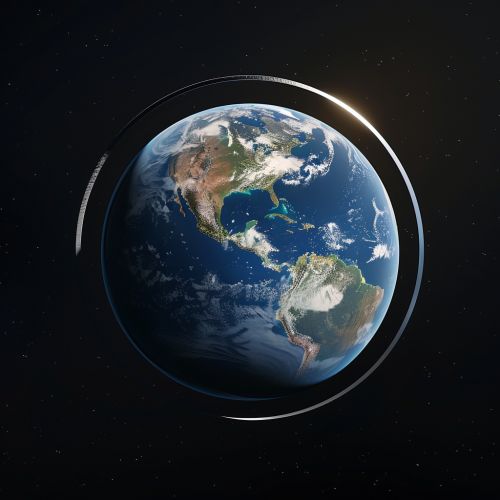Axial tilt
Introduction
Axial tilt, also known as obliquity, is the angle between an object's rotational axis and its orbital axis, or, equivalently, the angle between its equatorial plane and orbital plane. It differs from orbital inclination.
Overview
For a planet like Earth, the axial tilt is the angle of its equator relative to its orbit around the Sun. Earth's axial tilt varies over a 41,000 year period from 22.1 to 24.5 degrees and currently resides at about 23.5 degrees. This tilt is what gives us our seasons because as the Earth orbits the Sun, different parts of the planet receive different amounts of sunlight.
Causes of Axial Tilt
The axial tilt is caused by the uneven distribution of mass on the planet and the gravitational influence of nearby celestial bodies. For example, the Moon has a significant impact on Earth's axial tilt. The Moon's gravitational pull causes the Earth to bulge at the equator, which in turn causes the planet to tilt on its axis.


Effects of Axial Tilt
The axial tilt of a planet has a significant effect on its climate and seasons. The tilt causes the Sun to appear to move across the sky at different heights, resulting in varying lengths of daylight throughout the year. This variation in sunlight exposure is what causes the seasons. For example, when the North Pole is tilted towards the Sun, it receives more sunlight and experiences summer. Conversely, when it is tilted away from the Sun, it receives less sunlight and experiences winter.
Axial Tilt of Other Planets
Each planet in the solar system has a different axial tilt. For example, Mars' axial tilt is similar to Earth's, resulting in similar seasonal changes. On the other hand, Uranus' axial tilt is over 90 degrees, which means it essentially spins on its side.
Changes in Axial Tilt
Over long geological timescales, the axial tilt of a planet can change. This phenomenon, known as axial precession, is caused by the gravitational forces exerted by other nearby celestial bodies. For Earth, this is primarily the Moon and the Sun. Over a cycle of approximately 26,000 years, Earth's axial tilt oscillates between 22.1 and 24.5 degrees.
Conclusion
Axial tilt is a fundamental characteristic of a planet that significantly influences its climate and seasons. Understanding the causes and effects of axial tilt is crucial to understanding the planet's climate system and predicting future climate changes.
